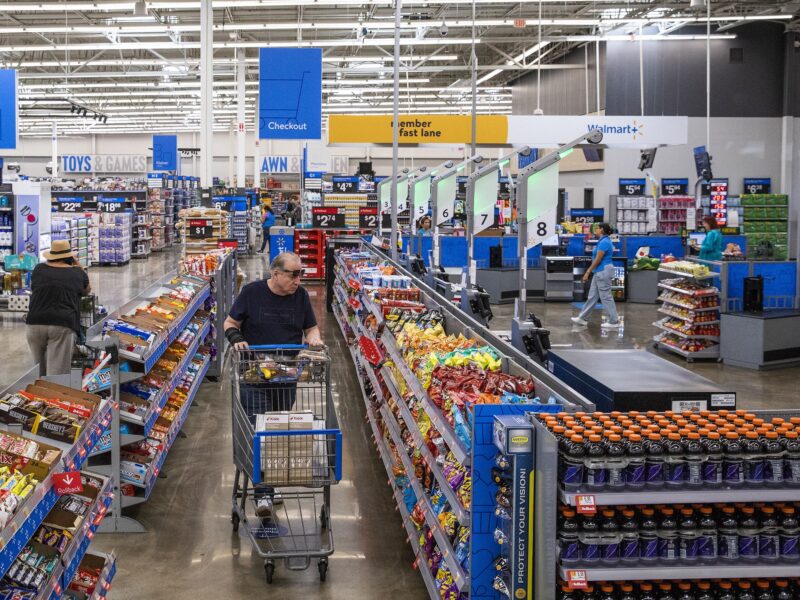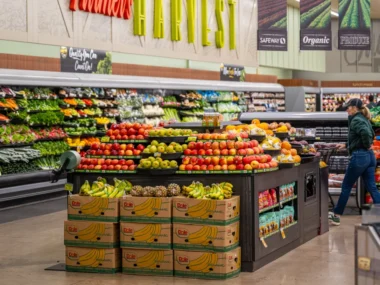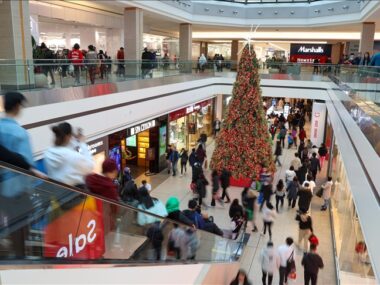Despite a slowing job market, high interest rates, and persistent inflation, the core of the US economy remains robust. Retail sales unexpectedly surged 1% in July, surpassing the forecasted 0.3% increase and rebounding from June’s 0.2% decline. This growth is crucial for the economy, given that consumer spending drives economic expansion.
The Dow rose 555 points (1.4%), while the S&P 500 and Nasdaq gained 1.6% and 2.3%, respectively, in response to the positive sales report. Sales increased across most sectors, especially at car dealerships, recovering from earlier cyberattack disruptions. Excluding autos, retail sales still grew by 0.4% in July.
Spending also rose in electronics and groceries, up by 1.6% and 1%, respectively. Dining out remained strong, although specialty stores and clothing retailers saw declines.
Oren Klachkin from Nationwide noted the economy is progressing toward a more stable state. The Federal Reserve’s high interest rates aim to curb inflation, with the Consumer Price Index falling below 3% in July, down from a peak of 9.1% in June 2022.
However, the Fed’s approach to controlling inflation has tempered economic growth, with a risk of recession if rates remain elevated for too long. While the economy has shown resilience, rising unemployment remains a significant concern, as increasing jobless rates can gain momentum and further impact economic stability.
While some retailers are struggling, others are thriving.
Many major retailers observe that American shoppers, even those with higher incomes, are spending more cautiously. This trend has been a focal point this earnings season, raising concerns on Wall Street about consumer spending. Consumer discretionary stocks in the S&P 500 have fallen 1.7% this year, the only sector in decline.
Home Depot reported a 3.6% drop in sales at stores open for at least a year and anticipates a further decline of 3% to 4% for the year, attributing this to high interest rates and economic uncertainty affecting consumer spending on home improvement.
Even high-end consumers are cutting back. The parent company of luxury brands like Louis Vuitton and Dior saw only a 1% increase in sales last quarter, with both revenues and profits down in the first half of its fiscal year.
Conversely, Walmart thrived, with a 4.2% increase in US store sales and an 8.5% rise in operating income. Online sales surged 22%, boosting its shares by 7% in pre-market trading. Analyst Michael Baker noted that Walmart’s focus on value has positioned it well in the current market, where value-driven shopping is prevalent.
The Fed remains on course to reduce interest rates.
Thursday’s retail spending report does not alter the Fed’s expected rate cut next month. With inflation trending towards the 2% target and a softer job market, a rate reduction is likely. However, the report may reduce the probability of a larger rate cut in September.
The Fed remains cautious, focusing on whether inflation is truly controlled before implementing significant rate changes. Current remarks from Fed officials, like Atlanta Fed President Raphael Bostic, indicate a preference for cautious adjustment to avoid reversing course if necessary.
The probability of a quarter-point rate cut next month increased to 75% following the report, while the likelihood of a half-point cut decreased. Stock levels may fluctuate as markets adjust.











